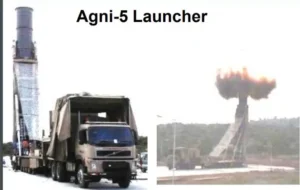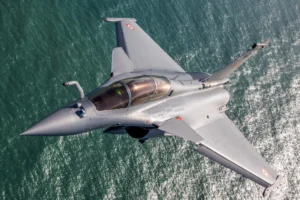The DRDO’s functioning depends on a robust system of long-term planning for capability development
by Lt Gen Anil Ahuja (Retd)
LATE last month, while the Prime Minister was profusely applauding Indian Space Research Organisation (ISRO) scientists for the success of Chandrayaan-3, a nine-member high-powered committee was set up to review the structure and role of the Defence Research and Development Organisation (DRDO). This is due to a perception that this premier defence R&D organisation is not delivering, is riddled with delays in research projects, lacks accountability and is perceived as being an ‘impediment’ (rather than a catalyst) to the capability development of the Indian armed forces. Most significantly, DRDO has not been able to rid India of the unenviable distinction of being the largest arms importer in the world.
It is often asked why DRDO fails to perform like ISRO or why it cannot deliver high-technology defence projects like the Defence Advanced Research Projects Agency (DARPA) of the US. The issues raised are fair, but they show a shallow understanding of the roles of these organisations and their functional environment. Thus, even when restructured after a review by this committee, the DRDO may still not be able to deliver unless the system of planning defence capability and Atmanirbharta (indigenisation) are addressed.
ISRO came into being on August 15, 1969. Its primary objective is to harness, sustain and augment space technology for national development needs, achieved through space research and planetary exploration. Towards that end, it designs and develops launch vehicles, satellites, communication and remote-sensing programmes, navigation systems etc. In essence, ISRO progressively develops its technological base (through R&D or partnerships) and plans missions based on the threshold achieved, national needs and budgets allotted. The environment in which ISRO operates remains constant and the initiative to pace the programmes rests with it.
The DRDO was created in 1958, and at present has a network of about 50 labs researching in diverse fields. The organisation, however, operates in a nebulous environment, which is uncertain and to a large extent, externally defined. Its mission is to help India achieve self-reliance in critical defence technologies and systems, and provide support in equipping the armed forces with state-of-the-art weapon systems in accordance with the requirements laid down. The demands placed are futuristic — to keep pace with emerging and critical technologies globally — as well as current — supporting the armed forces to develop indigenous capability for their operational requirements of today. The challenge is compounded by the reality that in India, no initiative is taken to ‘define the contours of future multi-domain battlefields’ which we may be drawn into. The prerogative of shaping these contours rests with technology-pioneering global powers, one of whom is at our doorstep.
For the overall system to function, the future battlefield must be visualised, at least 10 to 15 years in advance. This should be followed by deciding the priority and weightage to be accorded to each domain, based on the defence strategy and warfighting doctrine. The services need to broadly categorise their requirements, either as ‘immediate’ (required in the next two to four years), ‘near-term’ (required in the next five to eight years) and ‘future’ (for say 10 years and beyond). The immediate requirements should largely be met from the products readily available, and near-term from the systems already designed and developed. The DRDO, the private industry/R&D organisations or innovators come into the picture for future requirements only.
The requirements, therefore, need to be identified by the services or DRDO 10-15 years beforehand. A well-established system of evolving 15-year Long-Term Integrated Perspective Plans (LTIPP) with corresponding Long-Term Technology Perspective Plans (LTTPP) of the DRDO and five-year capital acquisition plans got derailed in mid-2016 with the discontinuation of the Five-Year Plans. An alternative system of a 10-year Integrated Capability Development Plan for the services, evolved in 2020, remains a work in progress. In its absence, the functioning of DRDO and even the acquisition process remain ad hoc and emergency procurement-centric.
The challenge gets bigger due to the absence of viable strategic R&D structures outside DRDO. There are no dedicated research laboratories or scientists integral to the individual services, like the US system of Army, Air Force and Navy labs; appropriate-level research laboratories or R&D centres do not exist even in major Indian arms industries; defence and strategic orientation of the academia is at present inadequate, and funding remains modest. We are yet to evolve procedures, internally or with foreign strategic partners, to share classified technologies and information with entities outside the government.
DARPA, under the US Department of Defence, is often quoted as a model organisation that the DRDO must emulate. The former, however, works only in spheres of emerging and breakthrough technologies, in fields beyond immediate US military requirements. Also, it works only with a nucleus of about 200-plus employees and specialised programme managers, hired on short-term contracts from the academia, the government and the industry. The bulk of the work is done externally, through a network of 200 defence laboratories, R&D centres and academic institutions. For this, the organisation is funded generously. In our context, such an external environment does not exist.
The functioning of DRDO depends on a robust system of long-term planning for capability development, oriented to meet the requirements of the future battlefield. Also, a clear distinction needs to be made between acquisitions for immediate operational needs and future programmes, allowing a lead time for R&D, design and development. A robust R&D system also needs to be created outside DRDO — in private industry and academic institutions, where non-strategic programmes could be allocated. All this requires dedicated funding through a defence budget based on well-conceived guiding parameters. Without taking cognisance of these aspects, even the best recommendations from the committee may just be ‘half the job done’.
Lt Gen Anil Ahuja (Retd) was former Deputy Chief, Integrated Defence Staff of Indian Army
Source link
#DRDO #replicate #ISROs #grand #success #story






